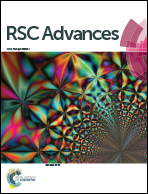Effect of humic acid on phenanthrene removal by constructed wetlands using birnessite as a substrate†
Abstract
The binding of polycyclic aromatic hydrocarbons (PAHs) to humic acid (HA) can boost the complexation–flocculation process and promote pollutant oxidation through the role of HA as an electron shuttle. HA-coated biochar (BA) was added to study the effects of HA on phenanthrene (PHE) removal by constructed wetlands (CWs) using birnessite as a substrate. HA reduced the average PHE concentration of effluent by 26.58% due to its role as a complexing agent, based on Fourier-transform infrared spectroscopy analysis. For CWs with birnessite, the PHE removal performance was further enhanced due to the role of electron shuttles. X-ray photoelectron spectroscopy and illumina high-throughput analysis revealed an enhanced Mn–Fe cycle. The total relative proportions of Mn-oxidizing bacteria and iron-oxidizing bacteria in VFBCW-HA/BA were 2.33 and 5.50 times as high as those in VFBCW-BA and VFCW-HA/BA. Humic acid also accelerated the biodegradation of PAHs and the quantity of PAH degradative bacteria in VFBCW-HA/BA was 6.29 times greater than in VFBCW-BA.



 Please wait while we load your content...
Please wait while we load your content...